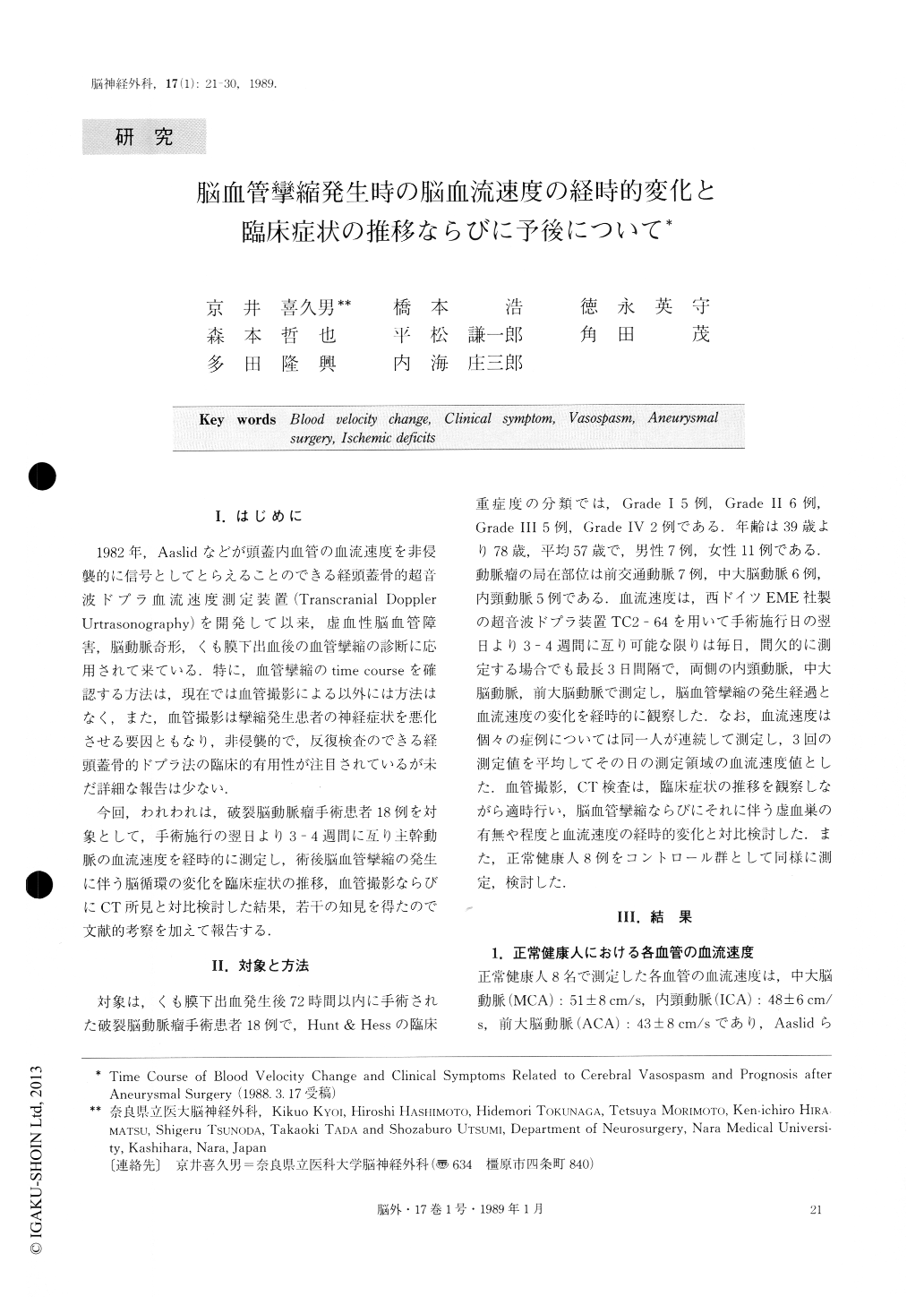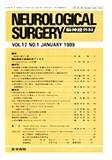Japanese
English
- 有料閲覧
- Abstract 文献概要
- 1ページ目 Look Inside
I.はじめに
1982年,Aaslidなどが頭蓋内血管の血流速度を非侵襲的に信号としてとらえることのできる経頭蓋骨的超音波ドプラ血流速度測定装置(Transcranial DopplerUrtrasonography)を開発して以来,虚血性脳血管障害,脳動脈奇形,くも膜下出血後の血管攣縮の診断に応用されて来ている.特に,血管攣縮のtime courseを確認する方法は,現在では血管撮影による以外には方法はなく,また,血管撮影は攣縮発生患者の神経症状を悪化させる要因ともなり,非侵襲的で,反復検査のできる経頭蓋骨的ドプラ法の臨床的有用性が注目されているが未だ詳細な報告は少ない.
今回,われわれは,破裂脳動脈瘤手術患者18例を対象として,手術施行の翌日より3-4週間に亙り主幹動脈の血流速度を経時的に測定し,術後脳血管攣縮の発生に伴う脳循環の変化を臨床症状の推移,血管撮影ならびにCT所見と対比検討した結果,若干の知見を得たので文献的考察を加えて報告する.
Cerebral vasospasm is a major complication associ-ated with subarachnoicl hemorrhage. In spite of exten-sive research, the pathogenesis of vasospasm remains obsure, and clinical management has so far been ex-tremely difficult. For the evaluation of the efficacy of any treatment and the timing of operation, the develop-ment and resolution of the arterial narrowing should be monitored. It is important to know the correlation be-tween the change in flow velocity and the course of cli-nical symptoms.

Copyright © 1989, Igaku-Shoin Ltd. All rights reserved.


